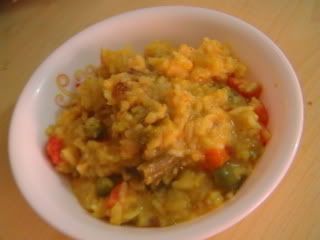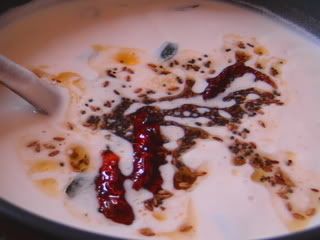A complicated name for an oh-so-simple dish. Mantav Ghashale is the Konkani name for what is known as Tori in Hindi. The Spencer's super market here calls it Smooth Gourd. I think that's because it is a smooth version of the Ridge Gourd. While I have no love for either vegetable, I have cooked both very often. Summers in Delhi/NCR mean that you eat the same vegetables over and over again. During one vegetable buying trip, I'd gone through everything and picked up nothing. S came over and said, "Are the vegetables so bad?" And I said, "No, but I just made all of these last week." As I said it, I realized what was happening. I forced myself to pick up the same vegetables. I figured that if I needed a change, I simply had to cook the same vegetables differently.
For instance, I made a thuvayal with Tori with go with idlis. I followed the recipe for Peerkangai Thuvayal. I decided that thuvayals are great sides with idlis and dosas as they have more than a decent helping of vegetables. (And don't ask for my recipe for idlis. I really don't have one and, much to Amma's disgust, continue to use MTR Rice Idli mixes.)
I remember that Amma made this "bajji" a few times. This bajji is not to be confused with the one that belongs in the bonda family. It is a simple side dish, quite like a tayir pachadi. So when you put Mantav Ghashale and Bajji together, you get this dish! The day I made it, it was a welcome change from the normal Tori sabji.
4 Smooth Gourds
2 Green Chillies
2-3 tbsp Coconut, scraped
1 cup Curd, beaten
For the tempering:
1 tsp Oil
1/4 tsp Mustard Seeds
7-8 Curry Leaves
1/4 tsp Asafoetida
Roughly scrape the skin of the gourds. Do not peel. Chop them into 1 inch cubes and place the in a microwave safe bowl. Cook on high for 3-4 minutes. Cool.
Grind together the cooked gourd pieces with the coconut and chillies. Mix together with the beaten curd.
In a frying ladle, heat the oil, add the mustard seeds, and when they splutter, add the asafoetida and curry leaves. Add this to the vegetable-curd mixture.
Your side dish is ready!






























